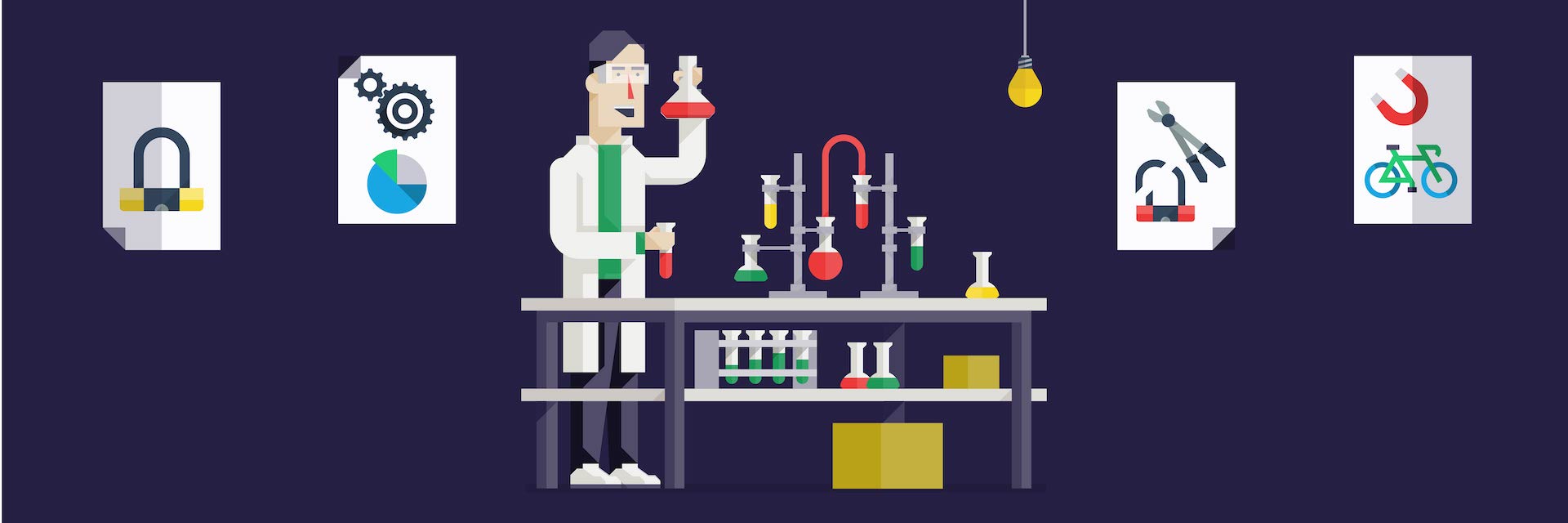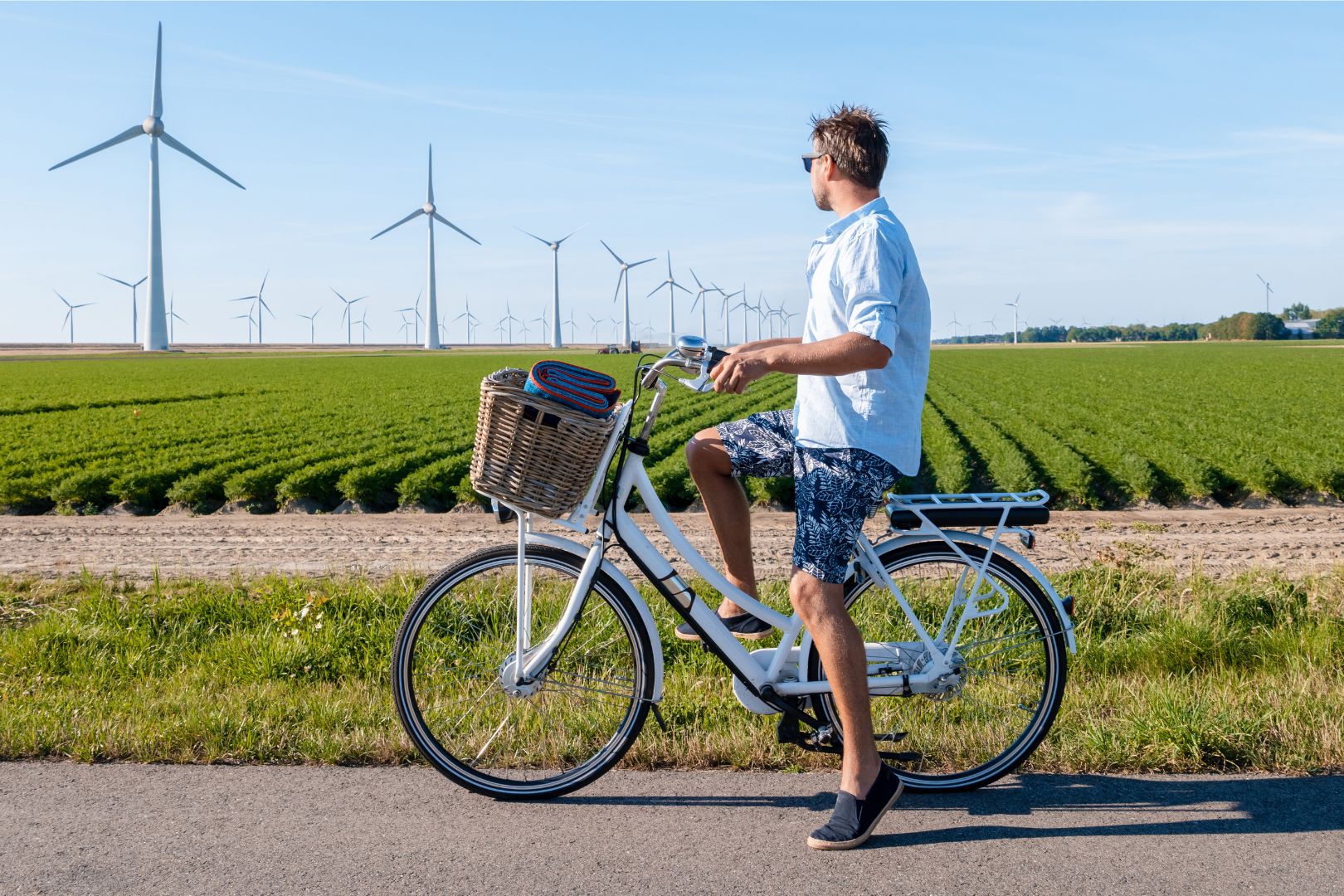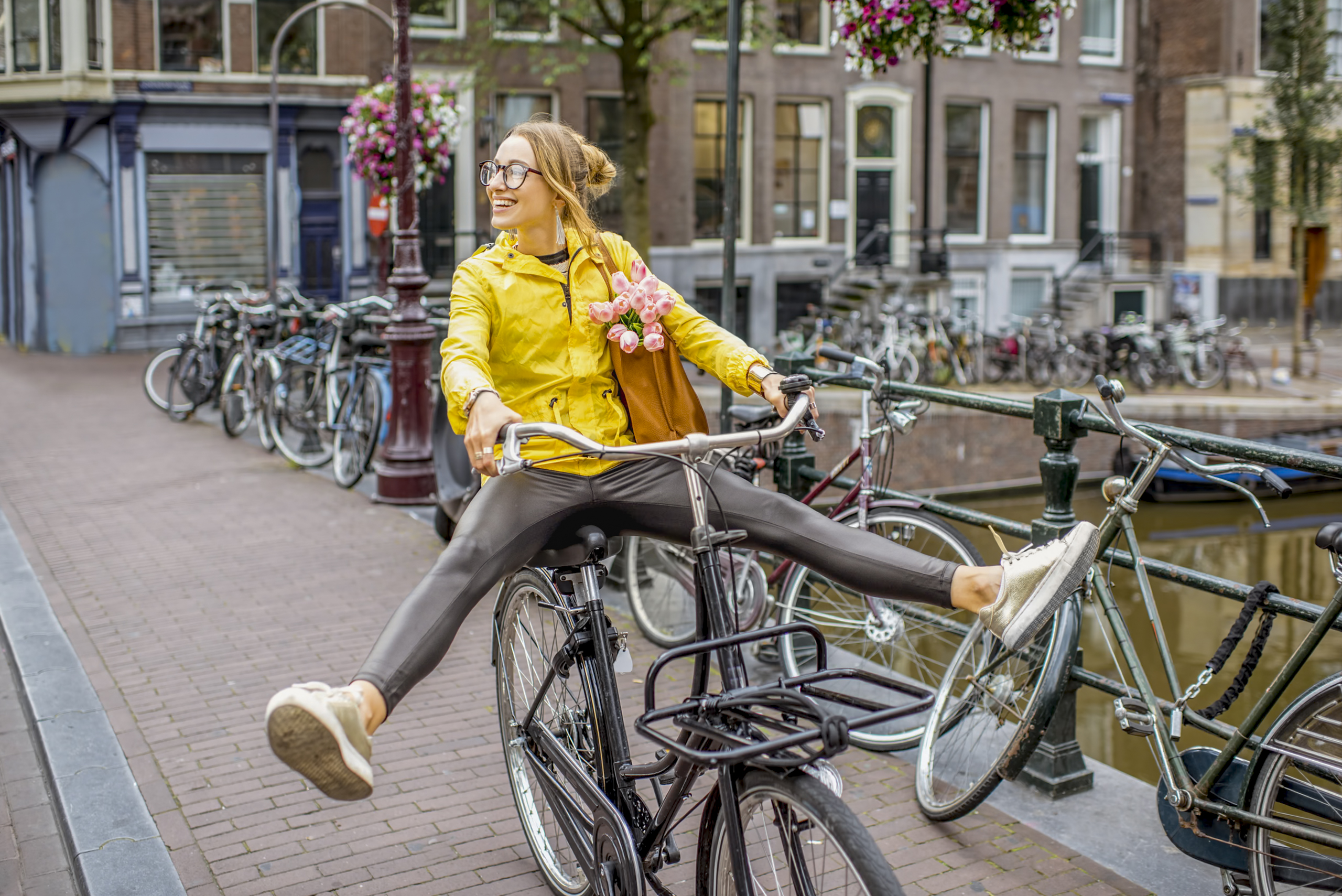
Anti-theft 1.0: The basics of bike locking
Guideline on how to protect your bike against thieves - what lock to choose, how to best lock the bike and which parking spots are the safest.
Did you just buy a new bike and want to make sure it stays yours for a while? Or lost (yet another) one and want to avoid the same experience again? Here are a couple things to consider when securing your bike. Five minutes definitely worth spending for every bike owner.
Living in the world’s hot-spot of bike theft (read: the Netherlands), no bike owner wants to end up like this:
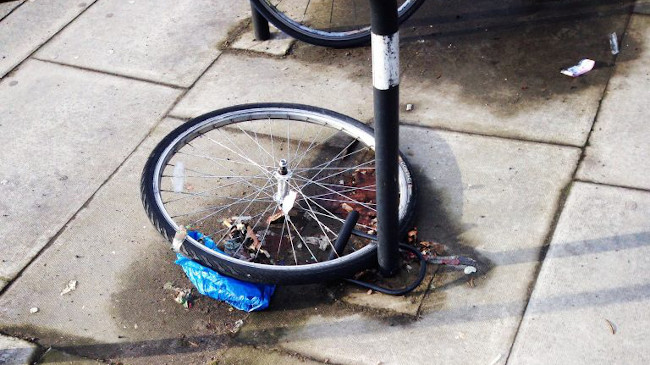
Only front wheel locked, the rest of the bike was stolen
or this:

Only basket left, after thief has stolen the bike
Chances are, however, rough. Up to 3-4 of each 100 bikes get stolen each year. We heard people complaining they’re on their 9th or 10th bike in 2 years. (!) And there are several reasons. See,
WRONG lock + GOOD place + WELL locked = bike STOLEN
GREAT lock + BAD place + WELL locked = bike STOLEN
GREAT lock + GOOD place + POORLY locked = bike STOLEN.
And so, here is a basic guide on how not to get in the unlucky victims group – how to choose the right bike lock, how to pick the right place, and how to lock your bike properly.
Step 1: Pick the right lock
There’s a lot behind choosing the right lock – how safe do you really need your lock to be? How do you know how safe the lock actually is? How much should you pay for it? And if you buy a huge chain (or worse), how do you even take it with you? There’s always a possibility of “just buying something and see”, but up to 800.000 Dutch bikers losing their bikes each year would probably advise you otherwise.
To pick a lock that will suit your specific needs, we need to balance three key criteria:
- SECURITY. The stronger protection the better.
- PRICE. Is it worth paying €5 or €100 for a lock?
- CONVENIENCE. How easy is it to operate and carry the lock with you?
SECURITY
We could talk long about different materials versus the tools and techniques thieves use to steal bikes (if you want to get deeper into this check out our post on how to choose the right lock), but in brief your best bet is to look for locks rated by independent expert organisations – the best ones are ART (Dutch, thus well spread in the Netherlands) or Sold Secure (US, not so common here).

Notice the stars rating on the left side of the badge.

SOLD SECURE stamps
ART rates their locks on a grade from 1 star (least secure) to 5 stars (hyper strong locks suitable even for motor vehicles), Sold Secure awards Bronze (least secure), Silver and Gold (strongest) ratings. Note that not all locks may even get a rating and that manufacturers need to cough up €€€ to even be considered (so by far not all locks are considered and rated).
If you live in a rural area and don’t exactly own a “rocket” or feel like your bike is the very last bike in larger city suburbs to attract attention, 2 stars of ART rating or Silver from Sold Secure should do for you, otherwise we’d recommend ART 3 (or better) or Gold Sold Secure badge lock. Especially in busy city centres and student-dense areas we recommend 4+ ART stars, ideally backed up by a second lock (may be a bit weaker).
And if you need some more things to look for, check the thickness of the lock. Locks >15 mm thick can’t be beaten by bolt cutters, 13-15 mm is still a solid thickness and only biggest bolt cutters cut through it. Get a (single) lock with a “weakest point” thinner than 13 mm and you risk your bike. Obviously the thinner the weak point, the bigger the risk (try tying your bike with a string once).
PRICE
Price is a HUGE difference maker in bicycle security, unfortunately for lots of victims. Buying a lock is a pain – you want to cycle and eventually spend your money on your bike, not on some “stupid protection”. Thing is, if you don’t invest in a proper lock, you will need to deal with this issue again soon. You’ll then probably will buy a better lock anyway, and a new bike on top of that. So you need to push the tear back and take buying your lock as an investment into your bike. Our blog will try to help you make an appropriate investment while not paying too much.
Lock prices of course vary, and a general rule says to spend 10% of the value of your bike on security. We strongly disagree with this – in the Netherlands, we say spend at least 20% of the value of your bike AND the starting budget is about €30 (and better directly add another €20 for a second, backup lock).
Key difference factors in price (aside from quality – which does not always necessarily follow the price) are brands and certifications. Kryptonite or Abus will usually be more expensive than no-brand locks, and ART/Sold Secure certified will cost you more than not certified ones. Our stance: brands don’t matter that much, but invest in a certified lock.
CONVENIENCE
Think “carrying the lock around and ease of use”. You probably don’t want to drag 20 kg chain on your trips or undergo a 10-minute fight every single time just to (un)lock your bike.
There are four basic types of locks (that allow you lock your bike more or less properly):
| U-locks (or “D-locks”) | Chain locks | Folding locks | Wire locks |
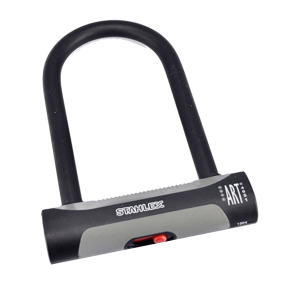 | 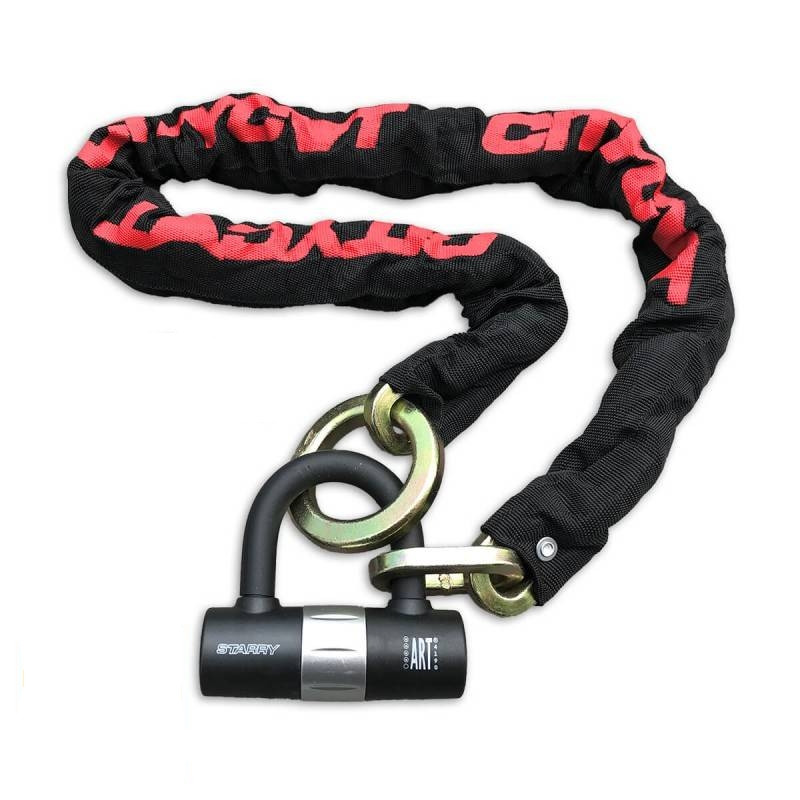 | 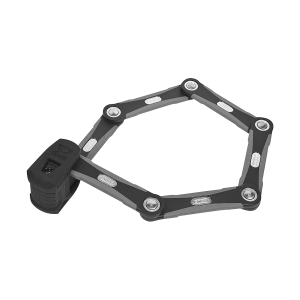 | 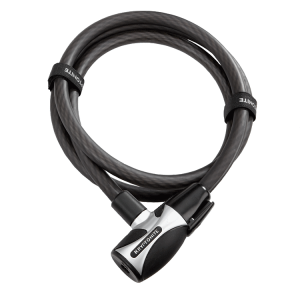 |
| Stahlex Beugelslot 448 | Starry CityCat 120 cm | ABUS Bordo GRANIT X Plus 6500 | Kryptonite KRYPTOFLEX 1518 Key Cable |
Shop Bike Locks
Cable locks are by far the most convenient type. Light, compact, easy to wrap around things. But they DO NOT PROTECT YOUR BIKE. Do not rely on a cable lock. They’re the easiest target of thieves (kind of a magnet, actually), often breakable by bare hands or simple wire cutters. Ring wheel locks are a popular choice in the Netherlands too. They’re a great supplement to your primary lock, but don’t allow “anchoring” bikes – so they definitely shouldn’t serve as only layer of protection, which is why we didn’t even add them in the categories.

The fifth type of bike locks, and the only really safe one: your very own python.
Convenience-wise, folding locks are the winners for us (but they tend to be more expensive than the other types), followed by chain locks (widely popular in the Netherlands), leaving U-locks least comfortable option (although also often the most affordable one).
ONE THING TO REMEMBER: NEVER USE WIRE LOCKS ONLY.
Still not sure which lock to choose? Need more details? Check our other article about choosing the right lock.
If you've just figured you need a new lock, check our bike accessories store for options.
Step 2: Pick the right place
Unfortunately, this is a bit underestimated step that has cost many of us our bikes. Sad truth is that no single lock is unbeatable. However strong lock you use and however well you lock your bike (more on that below), given enough time, thieves can eventually get through anything. That is why you need to NOT give them the “clear time”, and ideally even eliminate their desire to steal your bike.
And you need to be especially cautious about picking the right place if you’re leaving your bike parked outside overnight (case for many of us in the Netherlands).

The bike on the left, stored among others on frequented and well-lit place (notice the lamp) is definitely safer than the one on the right – even if they were the very same bikes, locked by the same locks.
Key tips for picking the right spot for your bike:
- Pick the neighbourhood, don’t leave clues. City centres, student-dense areas and neighbourhoods with high crime rates are not the best spots to leave your bike for a long time unattended. And it’s always better if the thief has no idea when you’re coming back for the bike.
- Seek frequented, well-lit places. The more people the better (cutting a lock always attracts attention), the more light there is the safer your bike is. You get the idea – parking in front of the station is safer than some end row of unsecured underground parking. Dark, unused alleys without lamps are the worst place to park your bike. And no, it is not “well hidden”.
- Find something you can attach your ride to, ideally a larger rack (worse a lamp post or so).
- Park in the middle of the rack. It is harder to get to your lock and take advantage of all tools.
- Leave your bike next to a better/nicer bike(s). This is sad but true – thieves will always target the nicer looking bikes first.
ONE THING TO REMEMBER: MORE TRAFFIC + BETTER BIKES AROUND = SAFER.
Still not sure where to park? Check our extensive article on how to outsmart thieves.
Step 3: Lock properly
Always lock the bike. Basic stuff, but in the worst cases it takes only seconds. Check this staged situation below – it took 22 minutes for a non-locked bike to be nicked in Amsterdam (and we think that was actually quite long compared to the average).
Here are some important things to remember when locking your pedal buddy:
Attach the bike to the ground
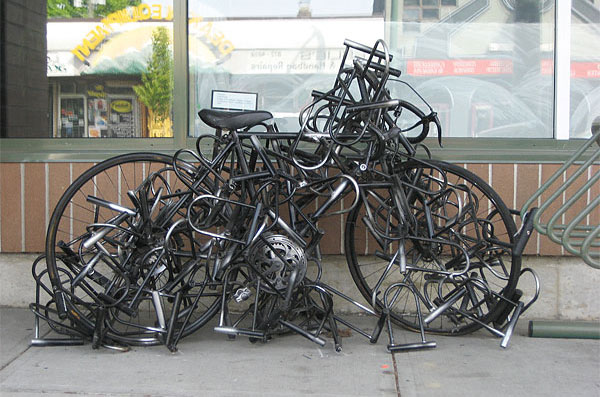
Awesome you care about your bike’s security bro, but you DO NOT HAVE THE BIKE ANCHORED!
Taking this further, if possible, do not use stands that only hold your bike in position (usually by front wheel – like the one on the photo above) but do not offer a possibility to anchor the frame with a lock.
Frame + wheel = sweet deal
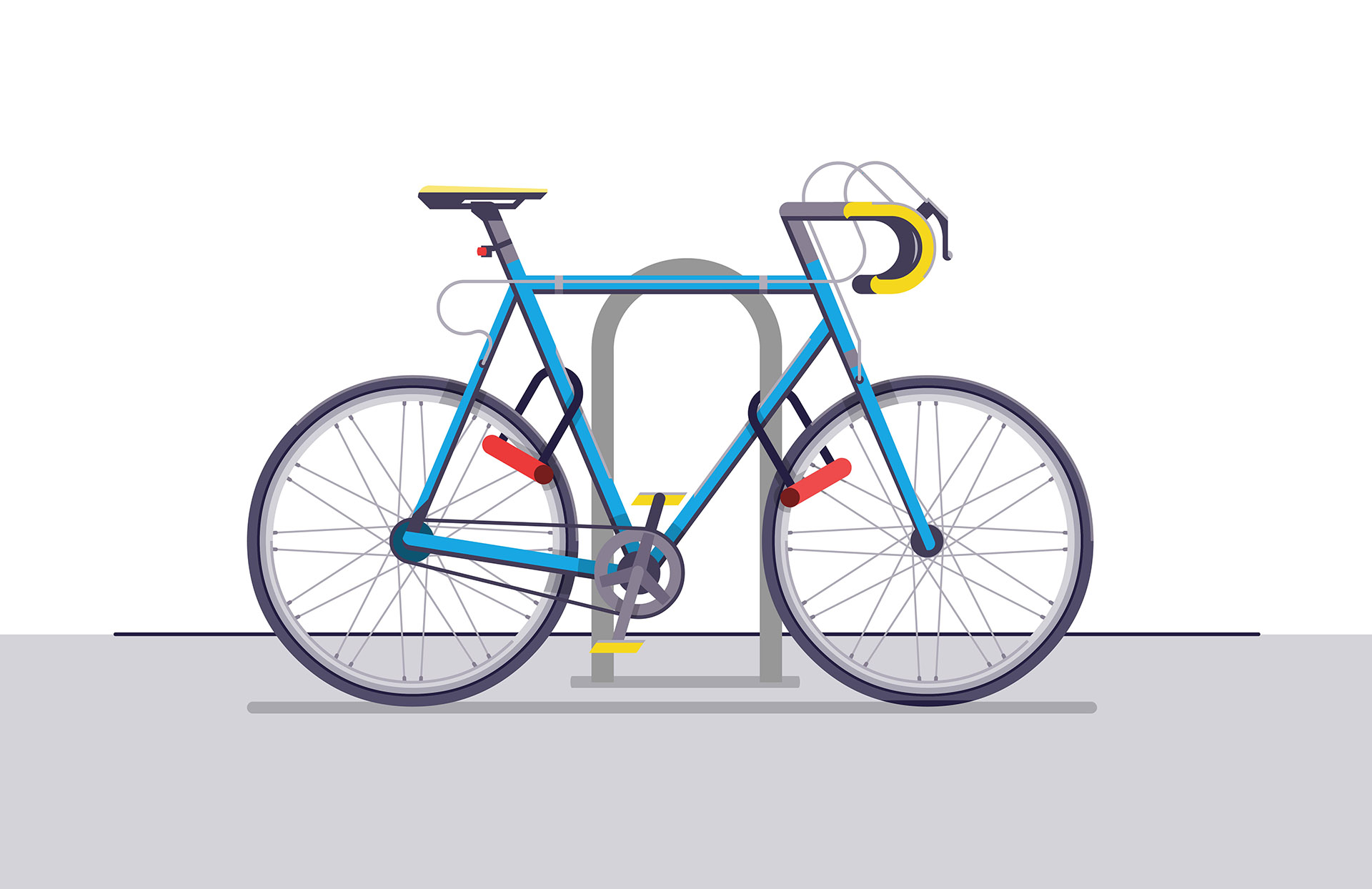
Great way to anchor your bike (and a good way to lock it altogether).
Two locks, protection that rocks
Not on the ground, slightly flexible
Lock even in garages
"PRO TIP": don’t forget the removable accessories, including your front wheel.
ONE THING TO REMEMBER: ALWAYS LOCK THE FRAME TO SOMETHING SOLID.
Of course, this is not all it takes to keep your bike safe forever – sometimes it is just pure luck of attentive passer-by or so, but holding up to those couple points we mentioned (especially the cable locks – seriously, don’t use cable locks), your chances against thieves grow exponentially.
Want to know even more about the topic?
Our other article, The Science of Bike Locking: Outsmart the Thieves!, goes much more in depth on the topic in case you wanna make really conscientious decisions about how to lock your bike.
NEED A NEW LOCK?
Check out our bike accessories store.
Shop Bike Locks
READ MORE ABOUT BIKE PROTECTION
The Science of Bike Locking: Outsmart the Thieves! (Advanced guide)
Bike locks: How do I choose the right one?! The ultimate guide.
Frame number: The real hero of the bike theft battle & how it can save your bike
